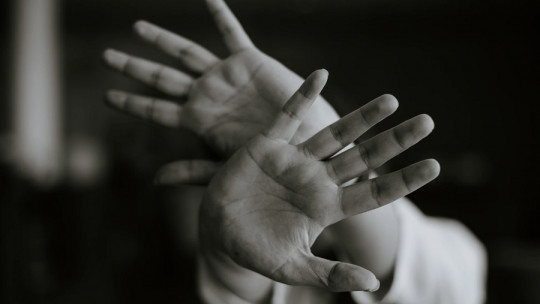We find ourselves standing in front of a room full of people looking at us and waiting for us to speak. If we don’t turn out to be very daring people, this situation can turn our stomach a little.
This reaction is perfectly normal, since the pressure that comes with public speaking can be unsettling. However, when this concern turns into dread we may be faced with a case of glossophobia
What is glossophobia?
The term glossophobia comes from the union of the terms of Greek origin “glossa” which translates as “tongue” and “phobos” which corresponds to “fear”. Although at first glance it may not offer us any clue about what glossophobia is, it is a specific anxiety disorder in which the person experiences fear of speaking in public.
Although it is normal to get nervous when we have to speak in front of many people, in glossophobia the person experiences an excessive, irrational and uncontrollable fear of such situations This exacerbated fear causes the person to experience abnormally high levels of anxiety every time he must speak in public, so he always tends to avoid these situations.
Although in many cases, glossophobia is part of a much broader social phobia, it does not always have to be that way. Furthermore, there are essential differences between these two types of specific phobia.
Unlike social phobia, whereby the person expresses an excessive fear of practically any type of socialization, glossophobia is a situational phobia that It only occurs in the specific context of having to speak before an audience even if it is well-known or small in size.
As mentioned, experiencing a certain nervousness or fear when speaking in public is completely natural; But when this fear prevents the person from carrying out said activity, it may be glossophobia. Furthermore, there are certain characteristics that distinguish a phobic fear from a normative one :
Furthermore, in the case of glossophobia, the anxiety response that the person experiences is so high that it it is completely impossible to speak in public to the point of fainting if they are forced to do so.
As a result of this, they tend to avoid this situation, which can interfere with their work or academic life, since it is quite likely that at some point they will be required.
What symptoms does it present?
As mentioned above, glossophobia is an anxiety disorder, so the symptoms respond to a clinical picture typical of this type of condition.
This means that the person with glossophobia who is exposed to the situation of having to speak in public will experience an extreme anxiety response. Sometimes the fear of having to speak in front of more people is so intense that the anxiety reaction can only occur when imagining the situation.
Although each person may experience different symptoms and with different intensity, the symptomatology that distinguishes both glossophobia and the rest of the phobias manifests itself in three different categories: physical symptoms, cognitive symptoms and behavioral symptoms.
1. Physical symptoms
When the person faces or thinks about facing the phobic stimulus, in this case having to speak in public, a hyperactivity of the central nervous system occurs that causes a large number of changes and alterations in the body. Among these symptoms are:
2. Cognitive symptoms
The physical symptoms are provoked and are accompanied by cognitive symptoms that are distinguished by presenting a series of irrational beliefs and ideas about the things that can happen when the person is speaking in public.
Ideas such as that you are going to be humiliated, that you are not going to rise to the occasion or that other people are going to notice the anxiety you experience are very recurring thoughts that invade the minds of people with glossophobia.
These cognitive symptoms manifest themselves through the following ideas or thoughts:
3. Behavioral symptoms
Finally, these symptoms are accompanied and manifested through a series of behavioral symptoms that appear as a response to the aversive stimulus or situation. These behaviors have the purpose of either avoiding said situation or fleeing.
All those behaviors that are carried out with the purpose of avoid or avoid the possibility of having to speak in public with known as avoidance behaviors. For example, the person with glossophobia may falsely claim that she has become ill in order to have to attend an appointment where she knew she had to speak in public.
On the other hand, all those behaviors that are carried out once the feared situation has begun are called escape behaviors and although they are not as common in glossophobia, they allow the person to escape the phobic situation as quickly as possible.
What are the causes?
In many cases, it is practically impossible to determine the specific origin of a phobic fear, since the person themselves is unable to remember or determine what caused it
However, in the majority of phobias, a genetic predisposition to the effects of stress and anxiety, together with the experience of traumatic experiences or those with an intense emotional charge and related to the feared stimulus, are the perfect breeding ground for the development of a phobia.
Is there a treatment?
Since glossophobia can be highly disabling, it is highly recommended that people who suffer from it Go to a psychology or mental health specialist Luckily, there are treatments that can significantly reduce the intensity of the symptoms and even eliminate them completely.
Through techniques such as live exposure or systematic desensitization, the person gradually faces the feared exposure. So if they are accompanied by training in relaxation techniques and cognitive restructuring, the person can overcome their phobic fear and carry out this activity normally.









